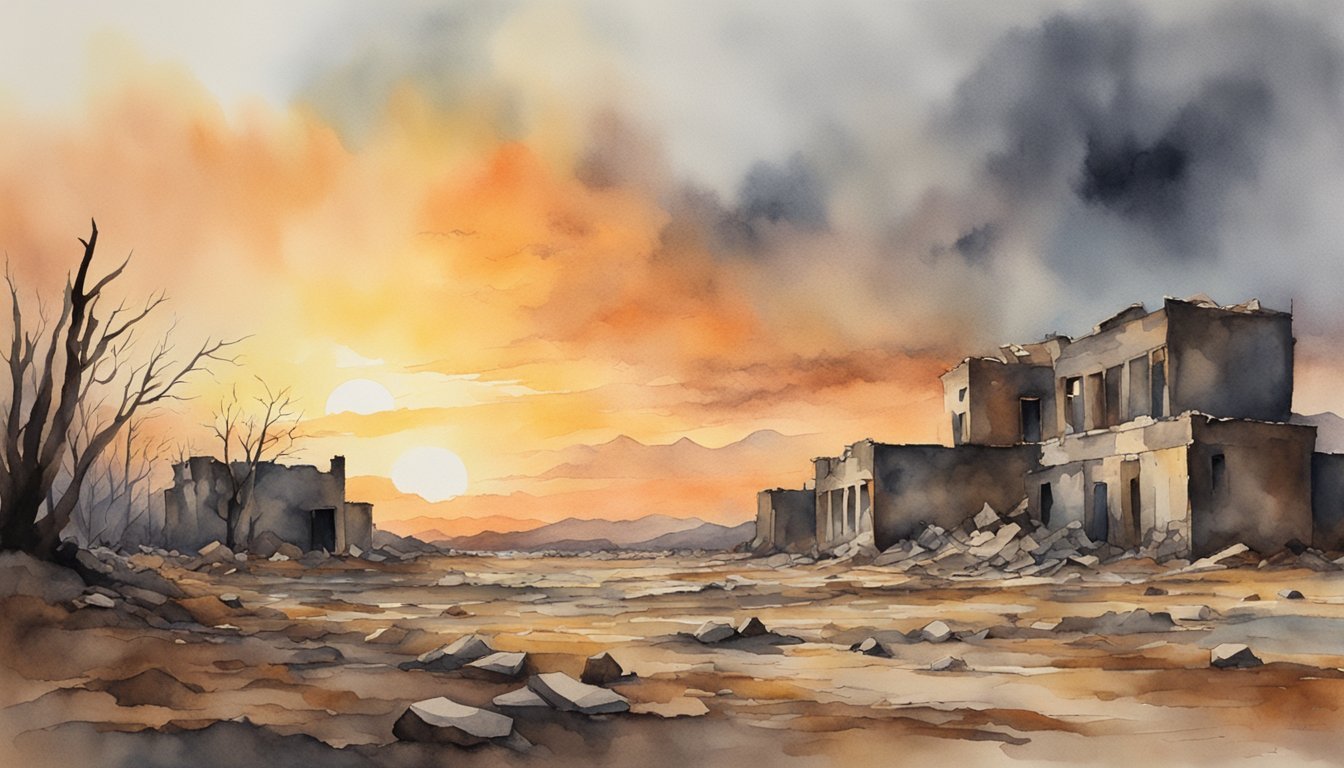Understanding the Doomsday Clock
The Doomsday Clock is a symbolic representation created in 1947 by the Bulletin of the Atomic Scientists, a group of researchers and experts in the fields of nuclear weapons, energy, climate change, and science policy. The clock’s purpose is to show the level of potential existential risk humanity is facing, with midnight representing global catastrophe.
The clock’s hands move closer or further away from midnight based on the assessments made by the Bulletin’s Science and Security Board. These scientists evaluate various factors that could bring about the end of the world, including nuclear war, climate change, advances in military weaponry, and other threats to human civilization.
Over the years, adjustments to the Doomsday Clock have reflected major global events and scientific developments. For example, in 2024, the clock was set at 90 seconds to midnight, driven primarily by concerns of escalating nuclear tensions and the increasing risks posed by climate change.
One interesting detail is that the clock does not have a linear scale. Each change in the clock’s position is based on the panel’s expert judgment and detailed analysis of the current situations facing the world. As such, the passage of real-world time does not directly correlate to the clock’s hands moving further or closer to midnight.
To give you a better understanding of the clock’s history, here are some of its significant movements:
- In 1953, the clock reached its nearest point to midnight (2 minutes) due to the testing of hydrogen bombs by the United States and the Soviet Union
- In 1991, it reached its furthest position (17 minutes) following the end of the Cold War
- In 2020, 2021, and 2022, the clock was set at 100 seconds to midnight, marking the closest it had ever been up until that point
It’s crucial not to see the Doomsday Clock as a precise prediction of when the world will end but rather a useful tool for raising awareness about the potential risks we face collectively. By understanding the factors that influence the clock’s position, we can encourage informed discussions about the actions needed to prevent disasters and build a safer future for humanity.
Historical and Predicted End-of-World Scenarios

Religious Prophecies and Cultural Beliefs
Throughout history, various religious and cultural beliefs have predicted the end of the world. Many prophecies were based on the interpretation of religious texts, astronomical events, and numerological calculations. For instance, in Christianity, the concept of the “End Times” is foretold in the Bible’s Book of Revelation. Similarly, the “Doomsday Clock” indicates the likelihood of a global catastrophe, primarily based on geopolitical factors. The clock was set at 90 seconds to midnight in 2024, with concerns related to Russia’s invasion of Ukraine and the increased risk of nuclear escalation.
Scientific Hypotheses and Space Threats
The scientific community has also proposed various end-of-world scenarios. These often involve natural events like solar flares, space collisions, or global pandemics. For example, the Carrington Event of 1859 was a massive solar storm that caused fires and telegraph malfunctions, demonstrating the potential impact of space weather on our planet. Additionally, the threat of pandemics has been highlighted by the COVID-19 crisis, with experts emphasizing the importance of scientific research and international cooperation in facing such global health challenges.
Space Threats:
- Solar flares
- Asteroid impacts
- Gamma-ray bursts
Technological and Human-Induced Risks
Advancements in technology also contribute to end-of-world scenarios, with concerns ranging from artificial intelligence (AI) to nuclear warfare. The Manhattan Project, which led to the development of the atomic bomb, marked a turning point in human history and underscored the potential for technological progress to bring about global catastrophe. Moreover, the danger of nuclear escalation and miscalculation between world leaders has been a persistent concern, as the balance of power shifts with each generation.
Technological Risks:
- Artificial intelligence risks
- Nuclear warfare
- Bioengineered pathogens
In addition to technological threats, human actions, such as climate change and resource depletion, pose significant risks to the planet. Global treaties and cooperation among nations are crucial to tackle these issues and prevent further damage to the environment and human societies.
In summary, end-of-world scenarios have been a part of human culture and scientific thought for centuries. From religious prophecies to scientific hypotheses and technological risks, these potential catastrophes serve as reminders of the fragility of our world and the importance of cooperation and responsible leadership to safeguard our collective future.

